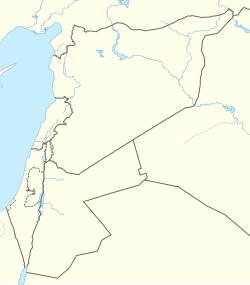Top Qs
Timeline
Chat
Perspective
Wadi Rabah culture
Archaeological culture of the Southern Levant From Wikipedia, the free encyclopedia
Remove ads
The Wadi Rabah culture is a Pottery Neolithic archaeological culture of the Southern Levant, dating to the middle of the 5th millennium BCE.[1]
Research
This period was first identified at the ancient site of Jericho (Tell es-Sultan) by British archaeologists John Garstang and Kathleen Kenyon in separate excavations. Kenyon has named this period in Jericho "Pottery Neolithic B". The name "Wadi Rabah" was since used in archaeologic literature thanks to the works of Israeli archaeologist Jacob Kaplan at the site of Wadi Rabah.[2]
Settlements
This culture is known from a small amount of sites, in some of which remains of small rectangular structures were discovered. Some larger structures were found in Munhata, Wadi Rabah and Ein el-Jarba, though Israeli archaeologist Yosef Garfinkel suggests that large courtyard structures were erected in that period, like the ones found at Sha'ar HaGolan of the preceding Yarmukian culture (c. 6400–6000 BCE) and Tel Tsaf of the following Early/Middle Chalcolithic period (c. 5300–4500 BCE).[2]
Remove ads
Sites
- Wadi Rabah
- Baysamun
- Dan
- Kfar Giladi
- HaGoshrim
- Nahal Betzet
- Tel Teo
- Kabri
- Horvat Uza[dubious – discuss]
- Kiryat Ata
- Einot Tsipori
- Tel Ali
- Yizre'el
- Tel Yosef
- Abu Zurayq
- Ein el-Jarba
- Munhata
- Nahal Zehora
- Al-Shuna al-Shamalyah
- En Esur
- Abu Hamid
- Habashan street
- Lod
- Tell es-Sultan
- Kidron Valley
- Atlit Yam
- Teluliot Batashi[3]
See also
References
Further reading
Wikiwand - on
Seamless Wikipedia browsing. On steroids.
Remove ads
